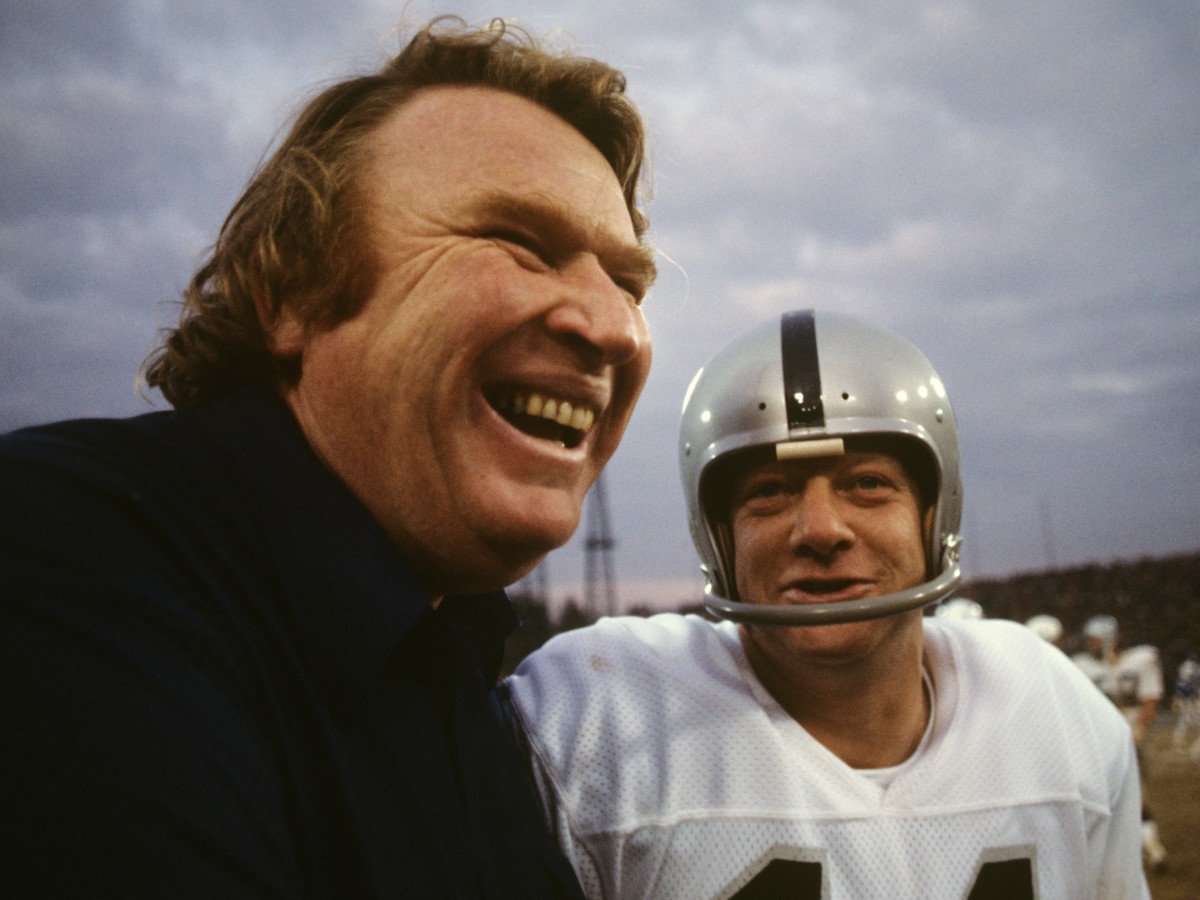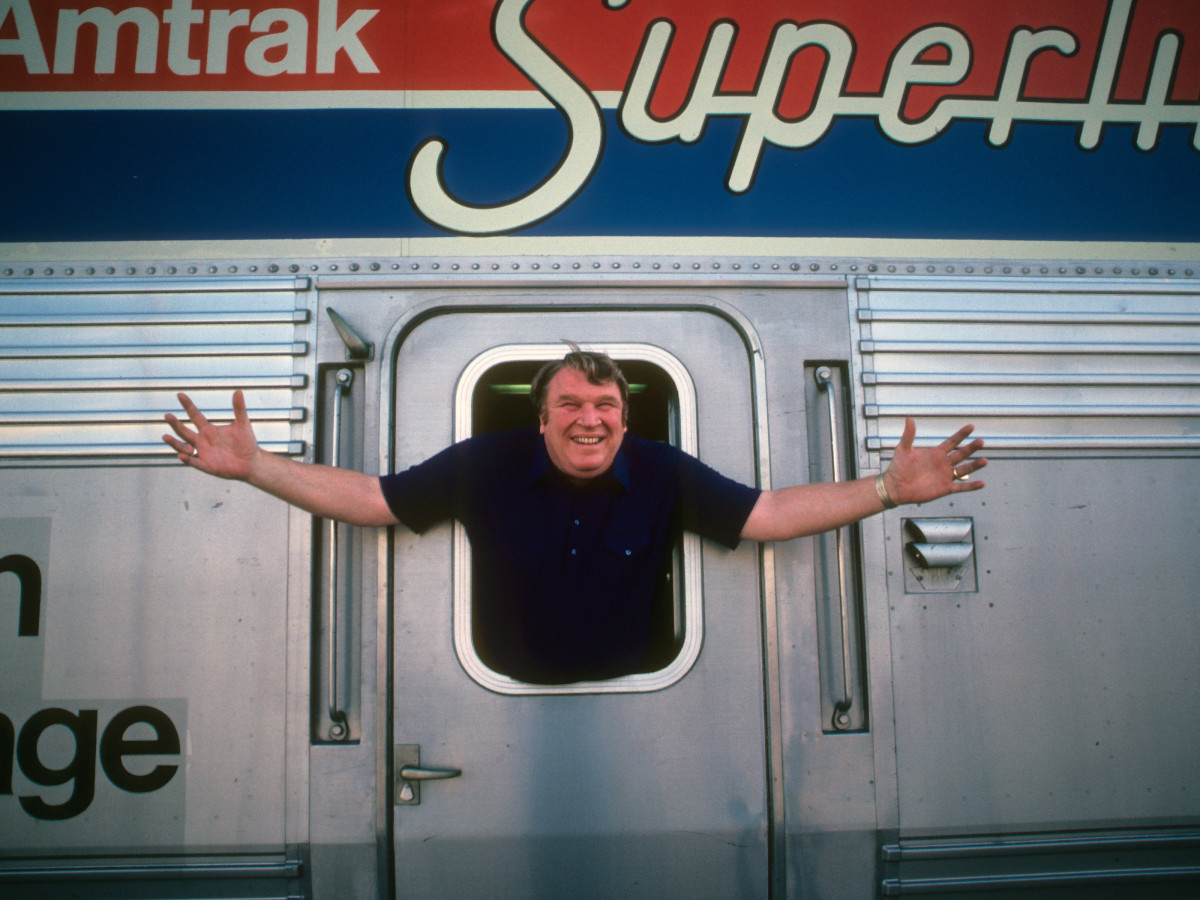John Madden’s Revolutionary Impact, Style Will Never Be Replicated

John Madden’s football career, suffering the unusual disadvantage of an increasingly interesting life, has long passed into irrelevance. He was one of the NFL’s greatest coaches, sure, but his years with the Oakland Raiders were so long ago, and so comparatively few, that it’s no longer possible to remember his shambling hulk on the sidelines, even if it was at a Super Bowl. Not when, in that athletic aftermath, he became one of our most unlikely celebrities, his mug on everything from magazine covers to video games, his cartoon commentary the soundtrack of our Sunday afternoons, his portfolio of endorsements an important part of the United States economy, his avuncular enthusiasm a reassuring respite every weekend.
Let’s put it this way: Madden, who died Tuesday at age 85, was rightly enshrined in Pro Football’s Hall of Fame, his 10-year turn with the Raiders producing seven division titles and a Super Bowl in 1977. His chauffeured ride, the famed Madden Cruiser, a strange and pointless artifact of his broadcasting career, has been installed there as well. It is no exaggeration to suggest that his bus is far more visited these days than his bust.
But before we recall the bus, the “Doinks,” the Miller Lite commercials, his announcing run across all four networks (let alone his everlasting digital footprint on Madden NFL), let’s pause to consider what made it all possible, that original long-ago stint with the Raiders. It was a wonderful stint, one of the best in NFL history. Elevated to head coach in 1969 at the age of 32, Madden so successfully enacted owner Al Davis’s vision of “orchestrated mayhem,” that the Raiders were probably as much feared as they were formidable.
At least one coach called them a “criminal element.” All those outcasts, the kind Davis liked to pick up on the rebound, ran roughshod on the NFL. “We had some characters,” admitted George Atkinson, a defensive back on his teams. Many of the players were so unconstrained by societal or certainly NFL norms they only answered to their animal names—the Stork, the Snake. “For him to manage us and keep us engrossed and playing football and winning, that was in itself a hell of a job.”
SI Vault: John Madden Is the U.S.A's Ambassador to Itself
Yet if Madden’s teams were the dirtiest in the league (gratuitous violence was their hallmark) they were also the least penalized. Yes, he had a light hand when it came to discipline; he rejected the authoritarian role of the traditional NFL coach, treating players more as equals than subjects, and seemed to encourage, or at least allow, lives of misdemeanor. But he was no pushover. If he had only three rules—be on time, pay attention and “play like hell when I tell you to”—he was nevertheless very much in charge. Players complained rarely, except to note that his practices were far harder than the game they played.
The result was an unequaled stretch—no coach has a higher winning percentage (.759) after at least 100 games than Madden—of excellence. But if Madden was mostly easy on his players, he was not so soft on himself. Once, after losing a Monday Night Football game by a single, bitter point, Madden was congratulated by announcer Howard Cosell for putting on a “hell of a show.” Madden went off on him. “To you it’s a show, to me it’s life.” Ten years of that particular life was all he could endure before bowing out of the game with what he called ulcer problems.

And then came the fun part. The books, the endorsements, the chance to narrate America’s new pastime in a voice so antic that it should be enshrined with the bus. He did something nobody before or since has done, locating the fun in a game that everyone else saw as a grim military exercise. Who knew that authentic enthusiasm had, until Madden came along, been in such short supply?
To be fair, he was regarded as a shrewd commentator, professorial even. His partner on Sunday Night Football, Al Michaels, once said, “I don’t think there’s anybody who has made the NFL more interesting, more relevant and has educated more people about football.” He was especially instructive when it came to those overlooked arts of the game, line play in particular. He was the first to restore importance, even intelligence, to the formerly ignored mob of ectoplasm. Well, he loved linemen.
For that matter, the video game that bears his name and will endure into apparent eternity, has succeeded because of his initial insistence upon reality, or his version of it. He really did have something to do with it, else there would not even be an 11-on-11 game. It’s interesting that, in the four decades of Madden NFL, the on-the-field product has bent more toward his electronic version than Vince Lombardi’s presumed ideal.
For all that, he is probably best remembered as your slightly addled uncle, a spit take for every third observation. “Playing in this nice weather,” he once opined, “really makes me remember all the times I got stung by a bee.” Could he be pithy? Sure. “If you see a defense with dirt and mud on their backs, they’ve had a bad day.” Did his analysis always rise to the level of epiphany? No. “Here’s a guy,” he once said, “who can use his arms and legs at the same time.”
His corresponding work on the Telestrator, while occasionally useful, was more often an abomination of all things audio-visual. Yet it was also must-see TV. He once inadvertently—one might say inevitably—drew a male body part for network viewers. “Doink!”
John Madden, the G.O.A.T. pic.twitter.com/dnEvOnF6ZY
— Jon Machota (@jonmachota) December 29, 2021
Accordingly, he was the most caricatured announcer this side of Cosell. The "Whams!,” the "Booms!,” the mostly unnecessary insistence that “They’ll score points if they can just get into the end zone”—who couldn’t impersonate John Madden? Add his holiday predilection for Turducken (the conflation of three different kinds of poultry) and his preference for bus travel (he really was claustrophobic, avoiding airplanes once his coaching days were over), and you had a fairly cartoonish, if not quite insane, character. Performers based entire cabarets on him.
What nobody could duplicate was his genuine gusto. He was mostly nonjudgmental when it came to the players. That went back to his coaching days, when his tolerance for mischief was rewarded with devotion, loyalty and a Hall of Fame record. He did not see a coming apocalypse when they grew their hair long or did Busby Berkley routines in the end zone (or eagerly clobbered a helpless quarterback). But if he could identify a kindred spirit on the field, someone who seemed to be having fun, who just liked to play, who somehow found joy running around with reckless abandon (ideally clobbering a helpless quarterback)—then he was the happiest man in the world. And so, probably, at least if you were paying attention, were you.
More on John Madden:
